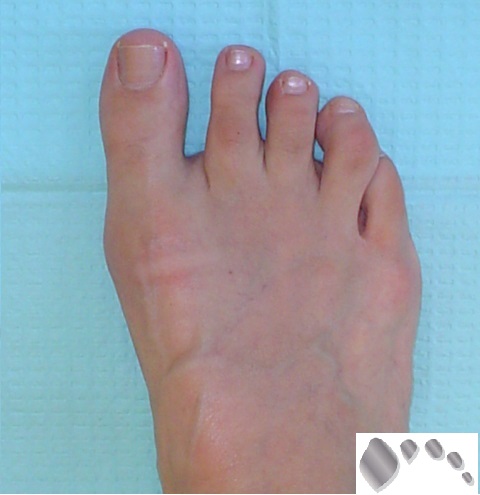What is a bunion?
Medically known as hallux valgus, a bunion is a bony and painful bump that forms on the inner big toe joint. Two main joints form the big toe, the larger one, known as the metatarsophalangeal joint (MTP), begins in the first longer bone in the foot and joins with the first bone of the toe (the phalanx).
Development and symptoms
A bunion typically develops slowly as the bone’s normal shape slowly changes, becoming more malformed with time if left untreated. Sometimes, the bunion can grow big enough to jut into the second toe, or cross over the other toe, which causes further pain and discomfort when walking or wearing shoes.
Symptoms include:
- Swelling, redness, tenderness, or inflammation of the big toe
- Limited mobility in the big toe that makes walking painful
- Calloused or hardened skin on the bottom of feet or on the big toe
- Stiffness in the big toe
- Infection
Who’s at risk for bunions?
Although anyone can develop a bunion, they are more common in women. Women, in general, tend to wear more narrow and tight-fitting shoes that can squeeze their toes together, posing a risk for a bunion to develop. Sometimes, both feet can develop a bunion, but those instances are due more to genetics than foot care and first occur by age 16.
Bunions and shoes: what’s the relationship?
As mentioned before, tight or narrow shoes can cause a bunion to develop as the toes are pressed together, which overtime deforms the natural structure of the big toe, causing it to grow outwards on an angle. The wider and looser shoes are, the less chance there is for a bunion to form because all the toes have sufficient space.
Non-surgical bunion care
Since surgery is not a realistic or necessary option for everyone, there are alternative ways to alleviate pain and discomfort caused by bunions. Here are a few common ways:
- Wearing wider-fitting shoes with enough space for toes to spread eventually in the shoe
- Wearing custom-made orthotic footwear or foot bedding
- Anti-inflammatory medications such as naproxen and ibuprofen to reduce swelling and pain
- Icing the bunion and area of the big toe
- Wearing cushioned padding inside shoes to prevent the bunion from making contact with shoes
Bunion surgery: more common than you think
Winter is a good time to consider bunion surgery since it’s a chance to take advantage of any insurance benefits that may end at the end of the year. A comprehensive exam with a medical professional will be needed to ensure surgery is your best option. If surgery is recommended, technology advancements make bunion surgery a common, and typically outpatient procedure. During bunion surgery, the big toe bone – along with the tendons and ligaments – are realigned in order to reshape the toe to its natural, aligned position.
Recovery time
Most bunion surgeries are outpatient, meaning no need to stay in the hospital after the procedure, however, this depends on individual factors such as age, overall health, and the severity of the bunion. Most people are out of the hospital quickly, but long-term recovery can last anywhere from 4-6 months. After initial recovery, follow-up doctor visits are needed up to a year after the surgery. Surgery patients wear a special boot or smaller cast following the procedure in order to protect the healing area. Boots are worn up to 2 weeks post-surgery but can be left on longer if recommended by the surgeon.
The end result: hopefully less pain and the ability to get back to normal activities with minimal to no discomfort. Surgery outcomes vary from person to person, so it’s best to talk to your doctor about your chances for a successful result.
As always, if your feet are hurting for any reason, make sure to call our Evanston office – Evanston Podiatric Surgeons at 847-475-9030, or Downtown Chicago office –Mag Mile Foot and Ankle Institute at 312-236-3507. Our care options for foot injuries and pain include some of the most cutting-edge procedures and technologies available!


